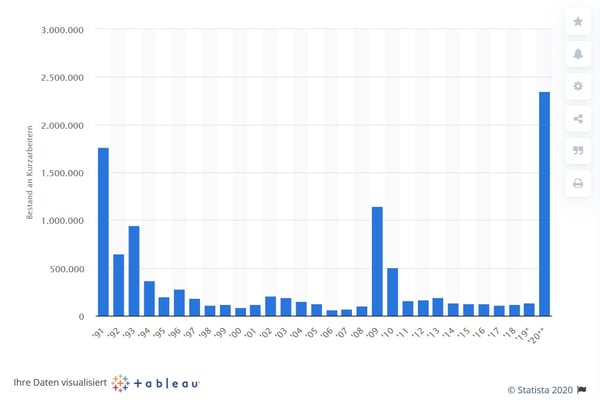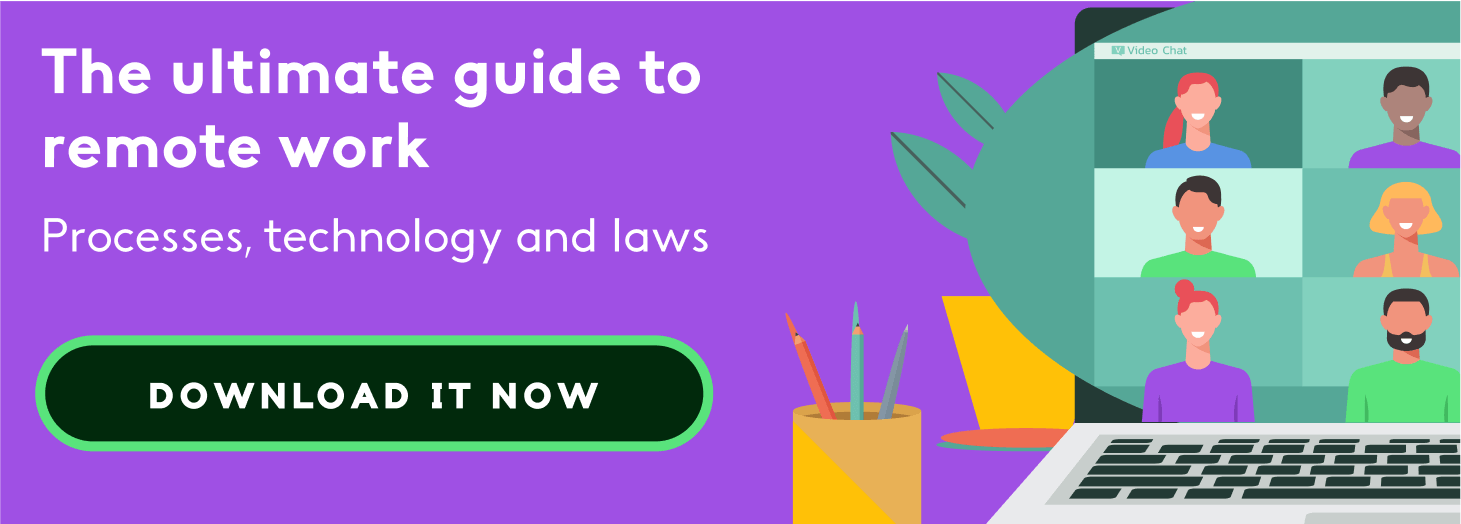Why you should establish a time and attendance tracking system in times of “Kurzarbeit”
Employees are the most valuable resources in any company. After all, their productivity determines whether and how successful your company is. Committed employees are proactive and are happy to go that extra mile if need be. So it would be easy to think that companies don’t need web-based attendance tracking for their employees. After all, why wouldn’t employees regulate themselves? Or so HR manager might believe.
The German government calculated that this year a staggering 2.35 million people in Germany are expected to go into “Kurzarbeit”, the German short-time work programme to help companies stay afloat in times of economical hardship and employees to keep their jobs. Taking into consideration that companies are legally obliged to prove the working hours of their employees in order to get the “Kurzarbeitergeld” an effective time and attendance tracking system is more important than ever.
Reasons to why track employee attendance
We have identified seven key points that demonstrate the importance of attendance tracking software for small businesses:
- At the moment, the most important reason is most certainly to track employee attendance, in order to forward the record to the “Bundesagentur für Arbeit”, the German Federal Labour Office.
- Working remotely turns out to be equally important, after all, employees need to have a workplace that enables them to be always approachable and track their presence.
- Punctuality is closely linked to staff productivity: Clocking-in and out on time as well as being punctual for meetings and appointments.
- The quality of work goes hand in hand with punctuality, so that work can actually be done without any stress and delays.
- Teamwork: Getting a team of people to work together and pursue mutual goals is no easy task. Coordination, a joint timetable, and a consistent workflow are basic requirements.
- Absenteeism and unpunctuality can be indicators of employee commitment and (lack of) morale. Keeping track of employee attendance is, therefore, a huge bonus to document any developments in one way or another.
- Last but not least, a proper time management system simplifies the work of HR departments and saves a lot of money and nerves.
Tracking employee attendance during “Kurzarbeit”
During the ongoing crisis, employees in Germany who have lost more than ten percent of their salary due to “Kurzarbeit” and who continue to be employed can receive “Kurzarbeit” compensation. The following applies:
- The weekly working hours may have been reduced differently for employees, departments and teams.
- Employers and HR departments are legally obliged to document and track the employee attendance during “Kurzarbeit” and send them to the German Federal Labour Office. Sick leave and public holidays must also be documented.
- Each company must submit a proof for the respective calendar month to the employment office within three months.
- Since the allowance for “Kurzarbeit” is only paid out by the German Federal Labour Office with reservations, it will be checked additionally after the end of “Kurzarbeit”.
Attendance and performance records during “Kurzarbeit” can be documented quickly and easily with Excel spreadsheets. But most HR departments don’t have the time to rummage through endless rows of figures and tables. They much rather use a web-based attendance tracking software to simplify the whole thing immensely. And why wouldn’t they?!
Effective strategies to improve time and attendance tracking
In the past, different tools have been used to track employee attendance, but so far the following four Human Resources strategies have become widely accepted to effectively document daily attendance and active times on the computer as well as maximising employee productivity.
Video surveillance
Video surveillance of employees has long been considered one of the most popular HR management methods to keep track of employee attendance. However, companies often find themselves in a legal grey area thanks to extensive data protection laws; for example, employers must inform employees about the cameras, the location and the purpose of the recording. It is now considered outdated and time-consuming, as all recorded information must be extensively analysed.
2. Managers and superiors
The mere presence of superiors and managers helps to keep the attendance of employees under control. Managers can see in real-time which employee has worked on which tasks, who is on holiday, etc. However, especially within the millennials workforce that values personal responsibility, this attendance tracking system can cause tension. The precise monitoring of attendance can be misinterpreted and create tension in teams.
3. Cards with ID system
ID systems are one of the most common employee attendance tracking systems. Just like the good old time clock, such systems control the clocking-in and clocking-out of employees. Employees usually scan a card when entering and leaving the building. As a big advantage, these automated timesheets make it easy to record and analyse information without the employees having to sign in and out manually.
A major disadvantage of ID systems, however, is that they do not record the employees' break times. This can lead to a situation where someone attracts positive attention because they have spent twelve hours in the office, but most of that time was spent in the kitchen or break room instead of working. In that regard, ID systems are more than unreliable. In addition, the cost-intensive systems have to be installed at great expense.
4. Human resources management software
Online personnel management system software for time and attendance tracking provides an effective and accurate way for HR departments to gain insight into daily computer usage and idle time, control absence management and maximize employee productivity. HR software automates timesheets and doesn’t require any human intervention, so HR managers don’t need to collect time-consuming employee attendance reports. Employees simply clock in and out automatically and track their actual hours worked online.
Last year in May the European Court of Justice (ECJ) decided that time and attendance tracking should become mandatory for every company across the European Union. Hence, the German Federal Labour Office is proposing a recommendation as to how a legally required time and attendance tracking system could look like in the future. This could be done either in paper form with Excel spreadsheets or in the form of web-based attendance tracking.
![]()
How to deal with excessive employee sick leave
Any absence of employees can be difficult to trace, especially once it has become a bit of a habit or has been accepted by the team. But instead of watching the costs of unexpected absences add up, a simple process to reduce employee absences can help, in addition to time track attendance software:
- Official Employee Attendance Policy: Whether your company doesn’t have a human resources department at all or operates with hundreds of people, an official attendance policy clarifies the expectations of behaviour at work and possible disciplinary actions for all team members.
- A consistent and complete time and attendance tracking system helps HR manager to track all absences. Without a meaningful and above all clear strategy for documenting employee absences, it can be difficult to prove entitlement to the benefits of “Kurzarbeitergeld”.
- Analyse timesheets: Recognising the extent of employee absences can provide good information about certain behaviour patterns. For example, an employee could always take a day off on a Friday before the weekend.
- Think about comprehensive follow-up care for employees returning to work after their absence. In human resources, it makes sense for HR professionals to ask their employees personally about their well-being and whether they feel able to resume their normal duties at work. In this way, HR manager can let the employee know that they are concerned about his or her well-being and that they have "noticed" their absence.
Automated timesheets with our digital time track attendance software
Kenjo’s personnel management software helps employees to manage their working hours and attendance easily and meticulously through a web-based attendance tracking. This allows them to document their working hours for “Kurzarbeitergeld”, and HR professionals get an immediate overview of all attendance and absence times. This helps HR departments to save time, especially in comparison to the good old Excel spreadsheet in which HR managers had to manually enter all recorded data.
Automated timesheets help HR managers to keep track of employee attendance, record absences as well as contracts, and export them in no time at all to make the data available to the “Bundesagentur für Arbeit”, the German Federal Labour as required by German law.



